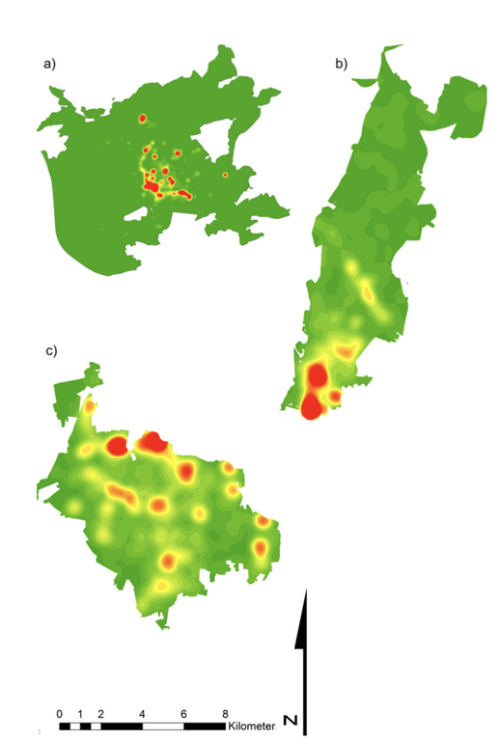Mapping cultural ecosystem services, recreational routes, and disservices of urban forests in Germany’s South West
Project description
We are investigating city dwellers’ perceptions of cultural ecosystem services and disservices as well as their recreational uses in urban forests. Therefore, we elicited spatial data of 3354 city inhabitants in Germany’s Southwest. We derived biophysical characteristics, landform and land cover data from various maps–including OpenStreetMap, inventory maps, high resolution LiDAR satellite imagery, and forest function maps of the federal states’ forestry administration. Aim of our study is to examine the linkages between cultural ecosystem services (CES) hotspots (demand) and physical landscape features (supply) to help urban forest managers identify natural resource management synergies and conflicts.
Research themes
Ecosystem management
Participatory planning
Project details
-
Start date:July 1, 2016
-
End date:December 31, 2022
-
Location:
-
Funded by:The Forestry Administration of Baden-Wuerttemberg (Forst Baden-Württemberg–ForstBW) and Eva-Mayr Stihl Foundation
-
Objectives:(1) Enhancing knowledge on habits, use, and perception of city dwellers, stakeholders, professionals, and authoritative representatives with respect to urban woodlands. (2) visualizing cultural ecosystem services of urban forests. (3) Making management decisions easier for urban forestry professionals by visualizing synergies and conflicts of social, ecological, and economic objectives. (4) Refining urban forest management planning and practice while encompassing provisioning, regulating, supporting and cultural ecosystem services equally. (5) To contribute to a holistically addressed urban greenspace planning and practice by city planners, forestry administration and local authorities.
Project contact
Christoph Baumeister
Participating partners
Tina Gerstenberg
Tobias Plieninger
Ulrich Schraml
Related publications
Baumeister, C. F., Gerstenberg, T., Plieninger, T. & Schraml, U. (2020b). Geography of disservices in urban forests: public participation mapping for closing the loop. Ecosystems and People 18(1), 44-63. doi.org/10.1080/26395916.2021.2021289
Gerstenberg, T., Baumeister, C. F., Schraml, U. & Plieninger, T. (2020). Hot routes in urban forests: The impact of multiple landscape features on recreational use intensity. Landscape and Urban Planning 203, 103888. doi.org/10.1016/j.landurbplan.2020.103888
Baumeister, C. F., Gerstenberg, T., Plieninger, T. & Schraml, U. (2020a). Exploring cultural ecosystem service hotspots: Linking multiple urban forest features with public participation mapping data. Urban Forestry & Urban Greening 48, 126561. doi.org/10.1016/j.ufug.2019.126561
